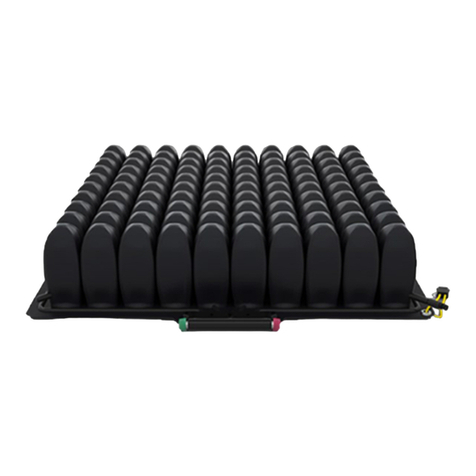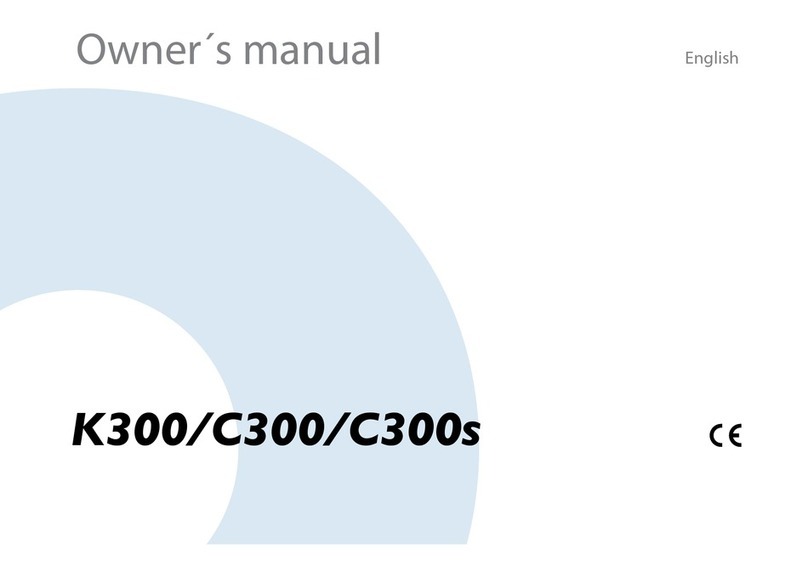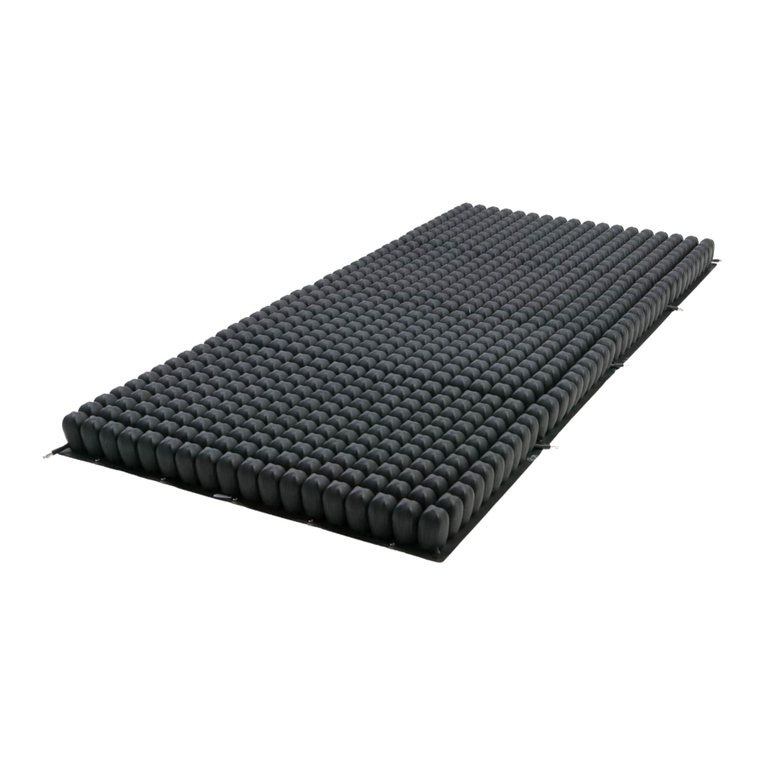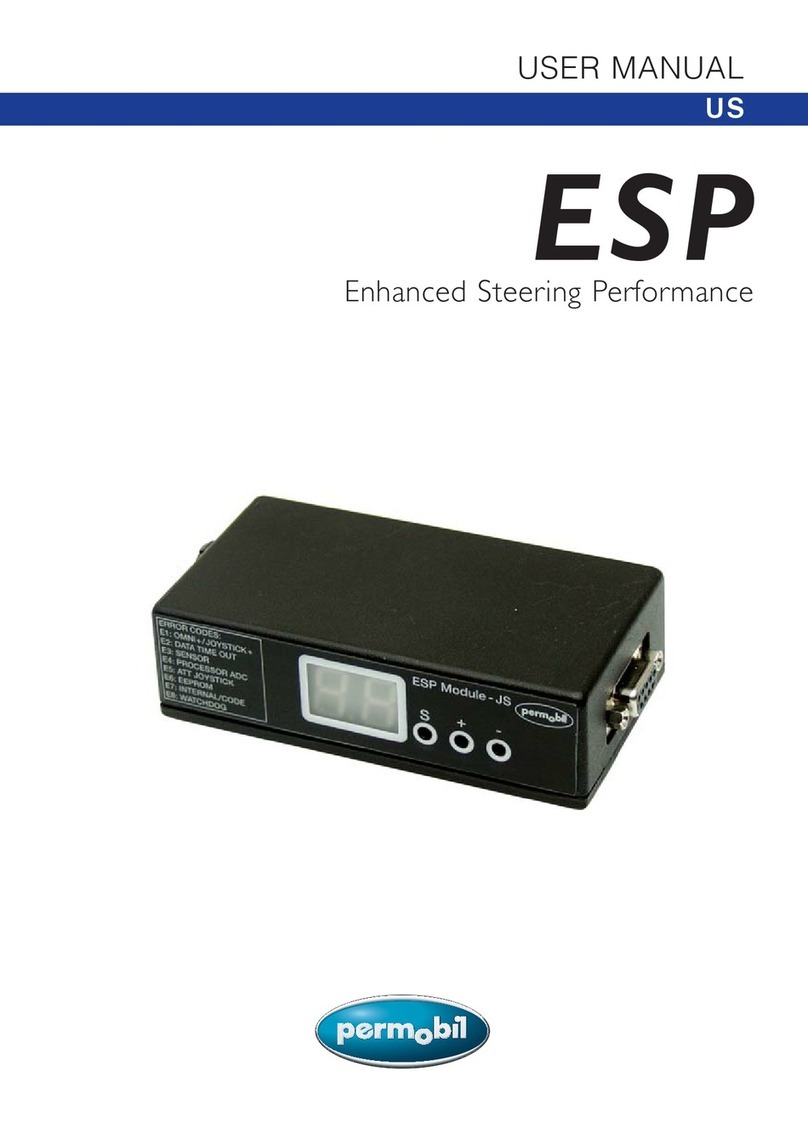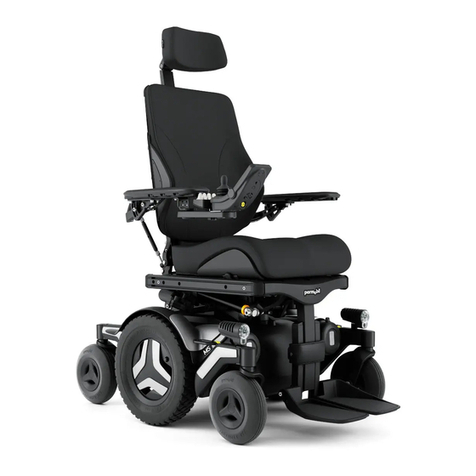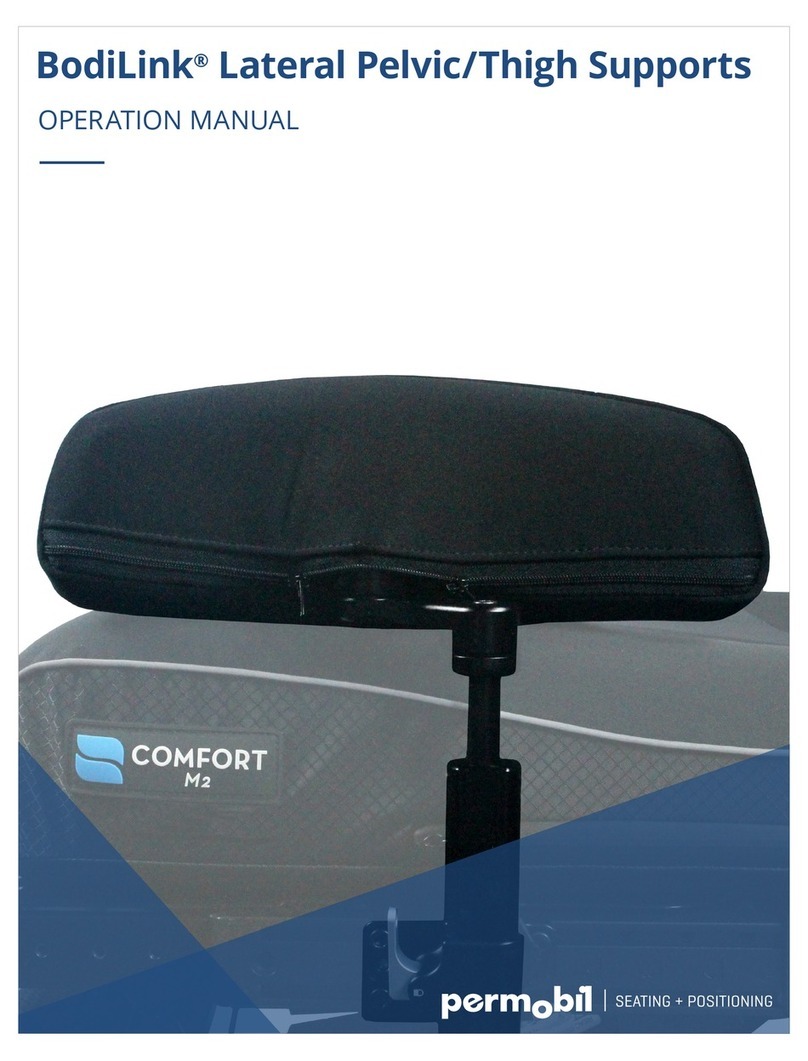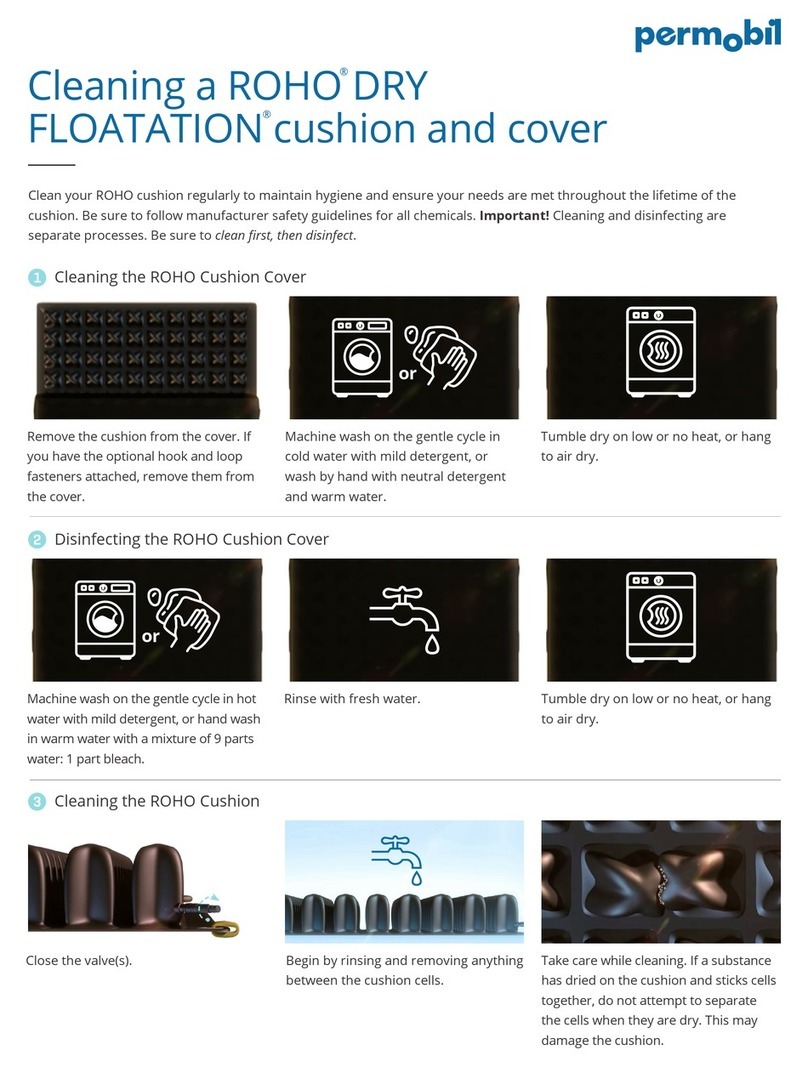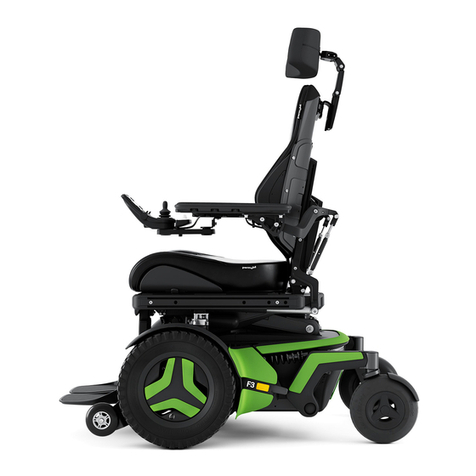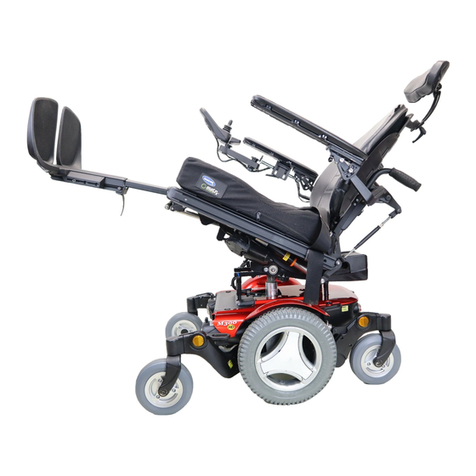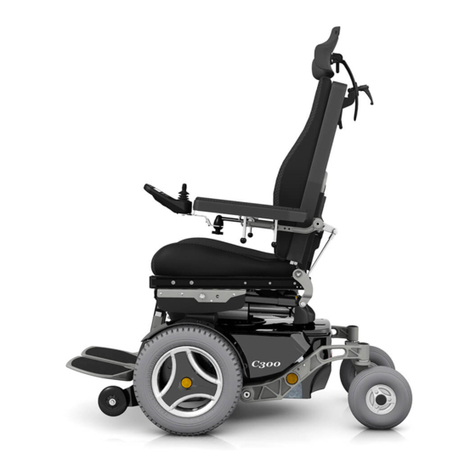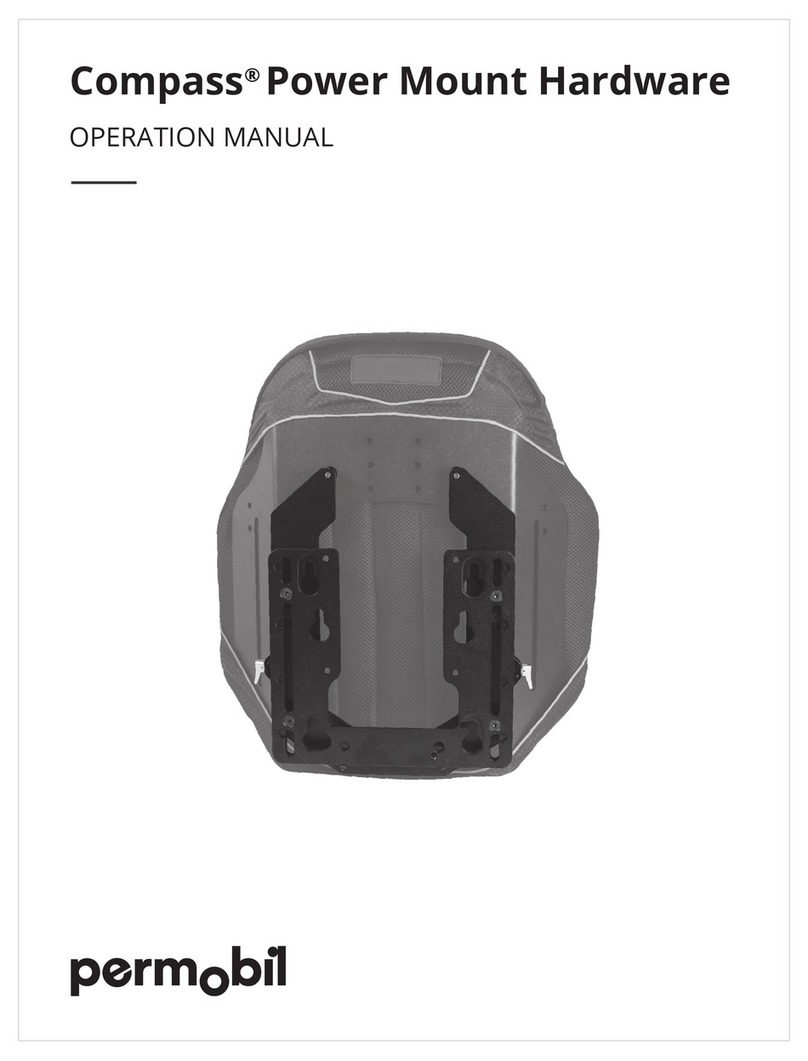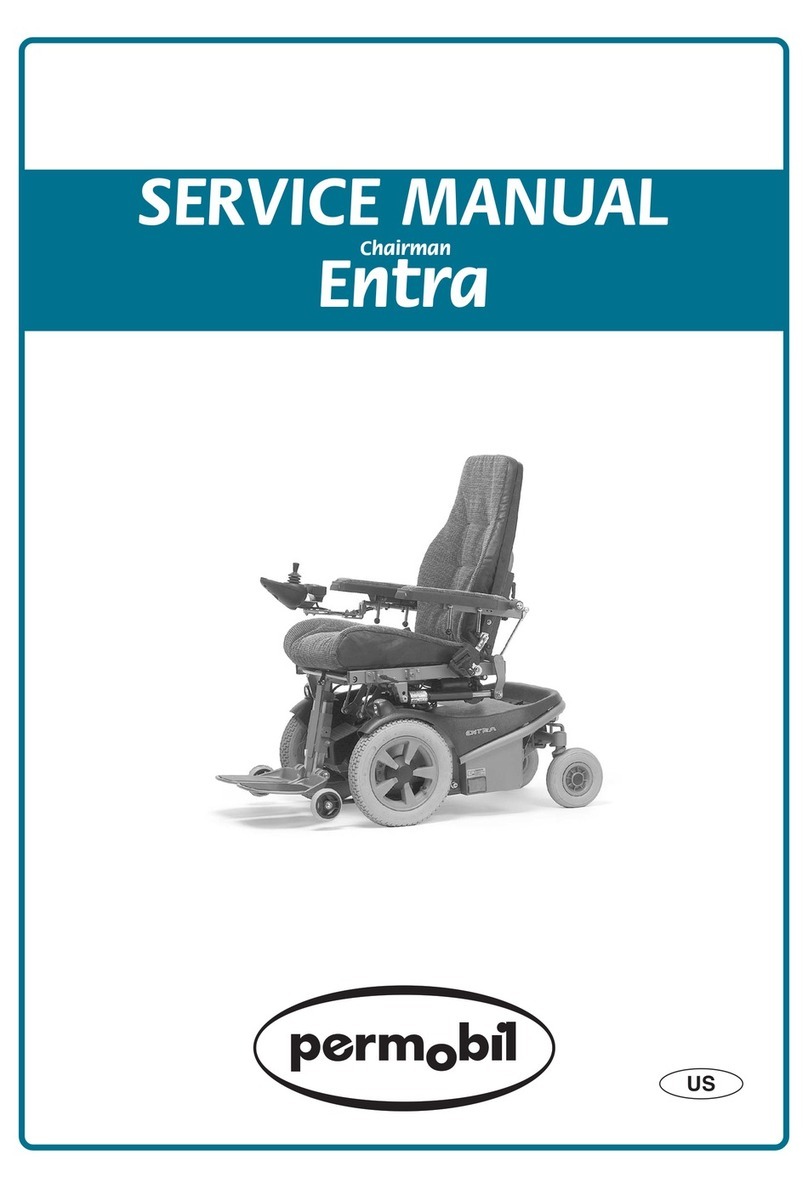
Helium User’s Manual March 2010 9
Part 2 : Operating Instructions
2.1 Positioning - Seated
2.1.1 Footplate/lower leg length adjustment (Fig. 1).
For sitting comfort, and to be properly positioned to obtain a standing posture, the seat to footplate
dimension must be set to the appropriate length. When doing so, it is important that the seat cushion
that client will be using on a regular basis is used.
When setting the lower leg length, the upper leg position should be parallel to the seat rail, but slightly
elevated from the cushion at the front edge. The result is appropriate pressure distribution for the thighs
and buttocks when seated and appropriate hip rotation and extension when standing.
This adjustment is done by removing the Footrest Length/Angle Adjusting Screws located on the lower
part of the downpost. The vertical adjustment is made in .8 of an inch increments. These same screws
are utilized to adjust the footplate angle (to plus or minus 5 degrees).
2.1.2 Chest strap height adjustment (Fig. 2).
To obtain optimum support for the user, especially when standing, the height of the chest strap can be
adjusted. The higher the chest strap is moved up the backrest the greater support it will offer. It is
adjusted by simply releasing its Velcro attachments to the back upholstery and relocating. Make certain
to weave the backrest straps (which are part of the tension adjustable back system) through the metal
retaining rings found on the chest strap.
Please note that additional support straps are available if more support is desired. Please contact
customer service with questions.
2.1.3 Seat depth adjustment (Fig. 3).
2.1.3.1 Measuring.
In seated position, measure the Seat Depth (measured from the front of the backpost to the back of
the knee).
2.1.3.2 Seat depth adjustment (Fig. 3).
Adjust the Upper Seat Rail first, leaving the screws in the Lower Rail (allowing the upper to pivot).
Then, adjust the Lower Seat Rail leaving the screws in the Upper Rail. BOTH THE UPPER AND
THE LOWER MUST BE ADJUSTED EQUALLY.
Utilize the following table to locate the appropriate hole position.
(should be approximately 4cm/1.5” less than upper leg length)
Seat Depth (front of backpost to
BACK of the knee)
Position Holes Showing (on insert
tube at rear)
Seat Depth-43cm/17" 0 0
Seat Depth-45cm/17.5" 1 1
Seat Depth-47cm/18.5" 2 2 std
Seat Depth-49cm/19" 3 3
Seat Depth-51cm/20" 4 4
Seat Depth-53cm/21" 5 5
